Master Hydroponic Gardening Basics: Your Guide to Indoor Farming is a book that aims to simplify the process of hydroponic gardening for beginners. Hydroponics is a method of growing plants without soil, using water and nutrient solutions instead. This setup allows for better control of growing conditions, resulting in higher yields and healthier plants.
The book covers the essentials of hydroponic gardening, starting with the basics and benefits of this type of gardening. It also explains the different types of hydroponic systems and offers guidance on selecting the most suitable setup for beginners. The book provides step-by-step instructions for building budget-friendly systems and highlights common mistakes to avoid. The guide emphasizes the ease of hydroponic gardening and offers tips for troubleshooting common problems.
By following the right steps, readers can save time, avoid costly mistakes, and produce enough vegetables to support their families. Whether you are a beginner or an experienced gardener, hydroponic gardening can be a rewarding experience that can lead to healthier, more sustainable living.
Key Takeaways:
- Hydroponic gardening is a method of growing plants without soil, using water and nutrient solutions instead.
- Hydroponic gardening allows for better control of growing conditions and higher yields.
- The book covers the basics of hydroponic gardening, benefits, and how to construct a suitable setup for different types of plants.
- The guide provides step-by-step instructions for building budget-friendly systems and highlights common mistakes to avoid.
- Hydroponic gardening is an accessible and enjoyable way to grow your own crops indoors, even for beginners.
Understanding Hydroponics: The Basics and Benefits
Hydroponic gardening is a method of growing plants without soil, using water-based nutrient solutions instead. It is a modern and soilless way of growing crops that can help overcome unfavorable conditions and provide substantial produce. Unlike traditional gardening methods, hydroponics allows for greater yield and faster plant growth.
There are different types of hydroponic systems, including wick, water culture, ebb and flow, nutrient film technique, and aeroponic systems. As a beginner, it is recommended to start with simpler systems like the wick system, which is suitable for herbs, microgreens, and peppers. Lettuce raft systems or water culture systems are also easy to set up but are best for leaf lettuce.
Hydroponics offers several advantages over traditional soil gardening. It allows for a higher yield, allows for closer plant spacing, requires less water, eliminates weed issues, and enables year-round gardening. This makes it a cost-effective solution for growing your own vegetables at home, even with limited space.
However, there are some disadvantages to consider, such as the initial cost of setting up the system, the need for education and regular monitoring, susceptibility to waterborne diseases, and the vulnerability of plant roots without soil.
To start your own hydroponic garden at home, you will need basic materials such as a water reservoir, hydroponic fertilizer, wicks or growing medium, growing trays, seedlings, and optionally, a grow light. Each system has its own setup instructions, but generally, you will need to set up the water reservoir, connect the wicks or growing tray, set up a light fixture (if using artificial light), and ensure the proper aeration of the water.
Overall, hydroponic gardening can be easy and rewarding with the right knowledge and guidance. It provides a way for individuals to grow their own food, save time, and avoid costly mistakes. Whether you are a beginner or an experienced gardener, understanding the basics and benefits of hydroponics can open up a new world of gardening possibilities. So, why not give it a try and start growing your own crops hydroponically?
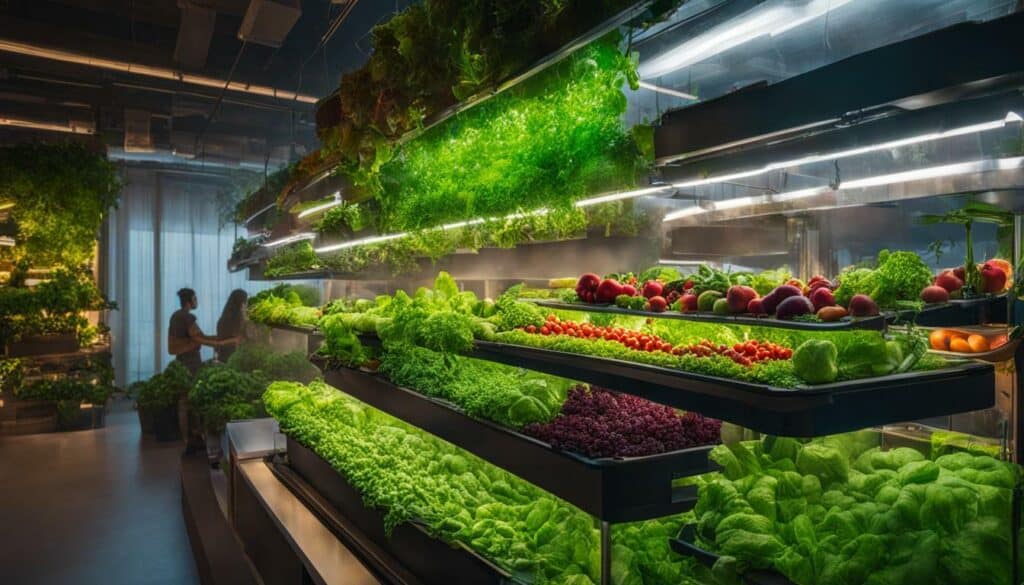
Types of Hydroponic Systems: Choosing the Right Setup
When it comes to hydroponic gardening, choosing the right setup is crucial for successful plant growth. Hydroponics is a soilless gardening method that allows plants to grow in a controlled environment, mimicking their ideal growing conditions. With the right setup, hydroponic gardening can yield substantial produce, making it an attractive option for growing plants at home.
There are several types of hydroponic systems to choose from, each with its own advantages and considerations. Some beginner-friendly systems include the wick system, water culture system, and ebb and flow system. These systems are easy to set up and are suitable for plants like microgreens, herbs, and peppers. More advanced systems include the nutrient film technique and aeroponic system.
| Hydroponic System | Advantages | Considerations |
|---|---|---|
| Wick System | Low maintenance, easy to set up | Not suitable for larger plants |
| Water Culture System | Low cost, easy to set up | Not suitable for plants with long roots |
| Ebb and Flow System | Flexible setup, suitable for a range of plants | Requires regular monitoring and maintenance |
| Nutrient Film Technique | Highly efficient, suitable for large-scale production | Requires precise nutrient control and monitoring |
| Aeroponic System | High yields, water-efficient | Requires advanced technological knowledge and maintenance |
When selecting a hydroponic setup, it’s essential to consider factors such as cost, ease of construction, and suitability for different types of plants. Building your own hydroponic system doesn’t have to be expensive, as there are budget-friendly options available. By following step-by-step instructions, you can construct effective systems that meet your needs.
Hydroponic gardening has numerous advantages over traditional soil-based gardening. It allows for higher plant yields, requires less space, uses less water, eliminates weeds, and enables year-round gardening. However, there are also some disadvantages, including the initial cost of setting up the system, the need for education and monitoring, susceptibility to waterborne diseases, and the vulnerability of plant roots without soil.
Some easy-to-grow plants for hydroponic gardening include greens like lettuce, spinach, Swiss chard, and kale, herbs like basil, parsley, oregano, cilantro, and mint, and fruiting plants such as tomatoes, strawberries, and hot peppers. It’s important to choose crops that are suitable for beginners and can thrive in a hydroponic environment.
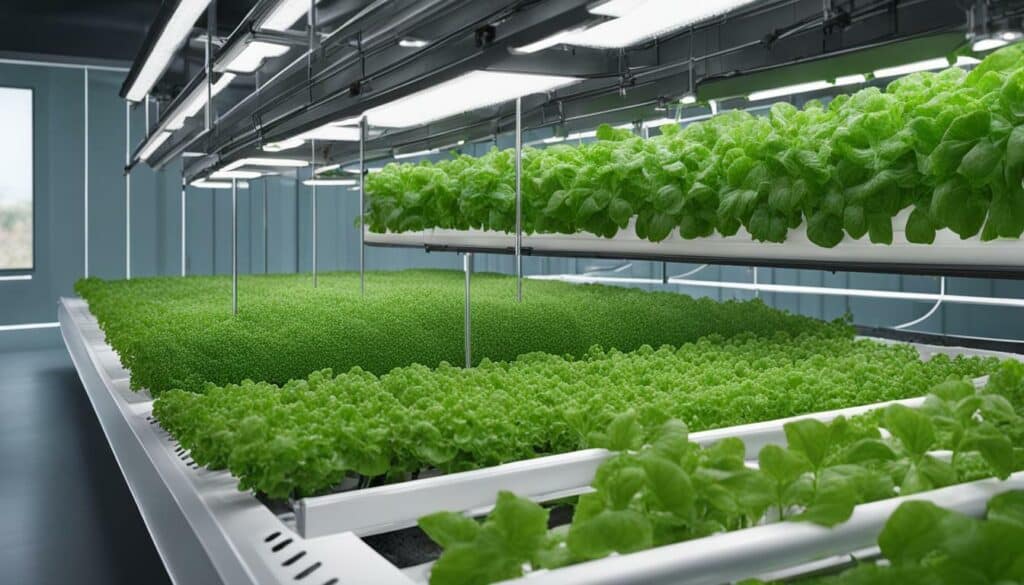
By following the right steps and having the proper guidance, hydroponic gardening can be relatively easy and rewarding. Educating yourself about the basics of hydroponics, the different types of systems available, and the common mistakes to avoid will help you save time, money, and avoid costly errors. Whether you’re looking to grow food for your family or start a small hydroponic farm, hydroponic gardening can provide a sustainable and efficient solution.
Building Your Own Hydroponic System on a Budget
Building your own hydroponic system doesn’t have to break the bank – with a little creativity, you can set up a functional setup on a budget. Hydroponic gardening is a soilless method of growing crops in a controlled environment, which can be done indoors or outdoors. This method can help overcome unfavorable conditions, produce substantial yields and is also suitable for those with limited space or no outdoor garden. There are various types of hydroponic systems available, such as the wick, water culture, ebb and flow, nutrient film technique, and aeroponic systems.
For beginners, it is recommended to start with simpler systems like the wick system, which involves using a water reservoir and wicks to provide water and nutrients to the plants. This system is ideal for microgreens, herbs, and peppers. Another beginner-friendly system is the water culture or lettuce raft system, which uses a Styrofoam platform to float plants in a nutrient-enriched water reservoir. This system works well for leaf lettuce but is not recommended for long-lived plants like tomatoes.
To build your hydroponic system on a budget, you will need basic materials such as a water reservoir, hydroponic fertilizer, growing medium, growing tray, seedlings, and optionally, a grow light for indoor setups. The wick system does not require any additional equipment, while the water culture and ebb and flow systems require an air stone and pump, and a submersible pump with a timer, respectively. It is important to follow the instructions carefully to set up the systems correctly.
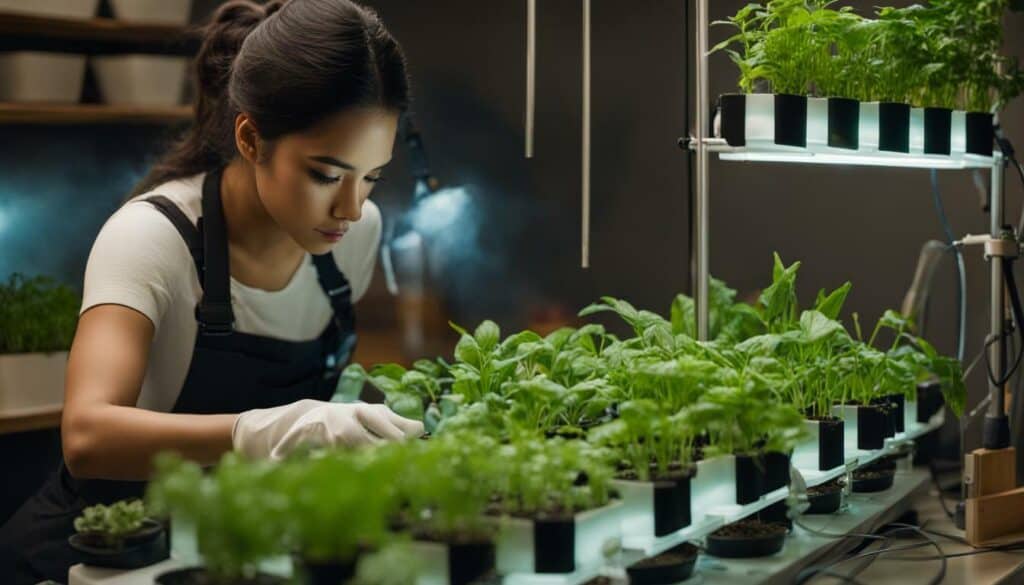
Hydroponic gardening offers several advantages over traditional soil gardening, such as higher yields, efficient use of space, reduced water consumption, and the ability to grow plants indoors. However, there are some disadvantages to consider, including the initial cost of setting up the system, the need for education and regular monitoring, susceptibility to waterborne diseases, and the vulnerability of plant roots without soil.
By understanding the basics of hydroponics and following the step-by-step instructions provided in various resources, beginners can successfully build their own hydroponic systems on a budget. With the right guidance, you can save time, avoid costly mistakes, and start growing your own crops hydroponically to support your family’s needs.
Common Mistakes and Troubleshooting in Hydroponic Gardening
Even the most experienced hydroponic gardeners have encountered challenges along the way, but with some knowledge and troubleshooting skills, you can overcome common mistakes in hydroponics. One of the most common mistakes that beginners make is not understanding the basics of hydroponics. This can lead to issues such as choosing the wrong hydroponic setup for specific plants, improper system setup, and providing the wrong nutrients to the plants.
Another mistake beginners make is not selecting suitable crops for hydroponic gardening. Some plants, like leafy greens, herbs, and small vegetables, are well-suited for hydroponic gardening. However, crops like fruiting plants may require more space, light, and care than a beginner might be able to provide. Vulnerability of the roots without soil and waterborne diseases are also common problems that beginners may face.
To avoid these mistakes, it is important to educate yourself about hydroponics, learn about different hydroponic systems, and understand how to set up your own system. It is also important to select appropriate crops for your skill level and monitor your system regularly to ensure that everything is running smoothly.
If you do encounter problems in your hydroponic garden, troubleshooting techniques can help you address them. For example, if you notice that your plants are not growing properly, it may be because they are not getting enough nutrients. Try adjusting the nutrient solution and monitoring the plants to see if it makes a difference. If you notice waterborne diseases, you may need to adjust the pH level or add a treatment to the water.
Overall, common mistakes and troubleshooting in hydroponic gardening can be overcome with the right guidance and knowledge. By following the right steps, seeking guidance, and ensuring proper monitoring of your hydroponic system, you can have a smoother and more successful gardening experience.
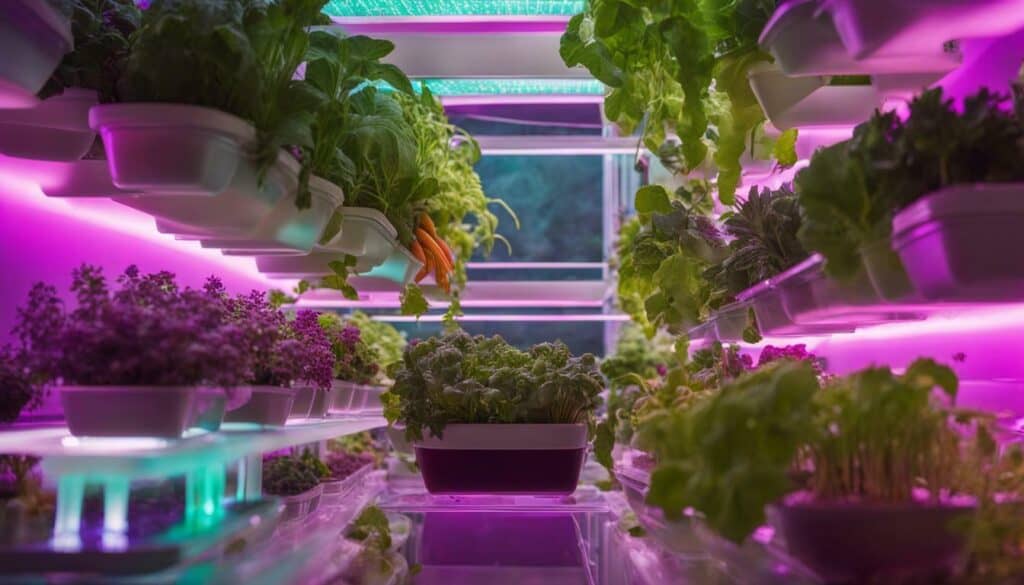
Hydroponic gardening can be challenging, but with the right knowledge and techniques, you can overcome common mistakes and have a successful indoor garden.
Advantages and Disadvantages of Hydroponic Gardening
Hydroponic gardening offers numerous advantages over traditional soil-based gardening methods, but it also comes with its own set of disadvantages. One of the biggest benefits of hydroponic gardening is that it allows for higher yields and faster plant growth due to the precise control of water, nutrients, and light. This method also requires less space and uses less water than traditional gardening since the plants are grown without soil. Hydroponic plants can be grown year-round, making it possible to have fresh produce regardless of the season.
Another advantage of hydroponic gardening is that it can be set up indoors, allowing growers to control the environment. Growers can customize the temperature, humidity, and lighting to suit the specific needs of each plant. This makes it possible to grow a wide range of crops, including those that would not thrive in certain climates or seasons.
Despite the benefits, there are also some disadvantages to consider. One of the main drawbacks of hydroponic gardening is the cost of setting up the system. Hydroponic systems can be more expensive than traditional gardening methods, particularly for larger setups. Additionally, the systems require regular monitoring to ensure that the pH level, nutrient levels, and water levels are properly balanced.
Another disadvantage of hydroponic gardening is that plants grown hydroponically are more susceptible to waterborne diseases, which can quickly spread throughout the system if not controlled. The absence of soil can also leave the roots more vulnerable, as soil acts as a protective layer around the roots in traditional gardening methods.
Despite these drawbacks, hydroponic gardening is an accessible option for beginners. Simple systems like wick, water culture, and ebb and flow setups can be constructed inexpensively and are easy to operate. Hydroponic gardening is also suitable for growing a range of crops, including greens, herbs, and fruiting plants. With proper care and attention, hydroponic gardening can be a rewarding and productive way to grow fresh produce in any location.
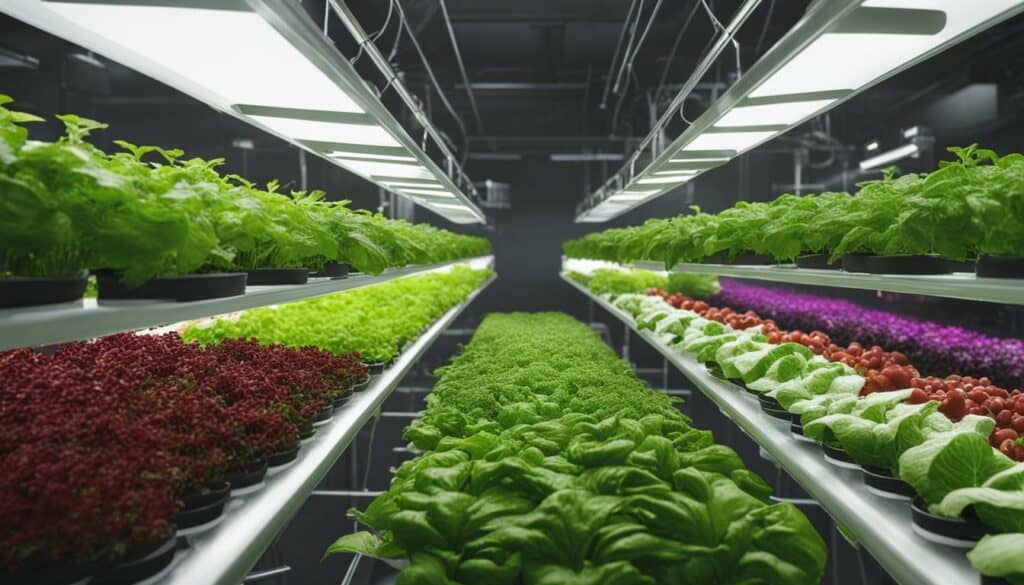
Choosing the Right Plants for Hydroponic Gardening
Choosing the right plants is key to success in hydroponic gardening, and starting with easy-to-grow varieties can boost your confidence as a beginner. In general, plants that have shorter growing cycles and smaller root systems are ideal for hydroponic systems.
Greens like lettuce, spinach, Swiss chard, and kale are some of the easiest plants to start with, as they have shallow roots and a short growing cycle. These vegetables also grow very well in hydroponic systems and can be harvested repeatedly.
Herbs like basil, parsley, oregano, cilantro, and mint are also great options for beginners. They are low-maintenance and can be grown in small spaces, making them ideal for indoor hydroponic systems.
If you want to grow fruit and vegetable plants, hydroponic systems can also be a great option. Tomatoes, strawberries, and hot peppers are some of the most popular choices for hydroponic gardening. However, it’s important to consider the specific requirements of each plant. For example, some fruiting plants require more space and support than greens and herbs.
When selecting a hydroponic system, it’s important to choose one that is suitable for the type of plant you want to grow. Beginners can start with simple systems like the wick, water culture, or ebb and flow systems. These systems are relatively inexpensive and easy to set up. More advanced systems like the nutrient film technique and aeroponic system are also available, but require more knowledge and investment.
Hydroponic gardening offers several advantages over traditional soil gardening, such as higher yields, the ability to grow plants closer together, and reduced water usage. However, it’s important to monitor your plants regularly and make adjustments to their environment as needed. With the right guidance and knowledge, hydroponic gardening can be an easy and rewarding way to grow your own crops at home.

As a beginner, starting with easy-to-grow plants in a simple hydroponic system is the best way to gain confidence and experience. With time and practice, you can experiment with different plants and systems to find what works best for you. Happy gardening!
Recommended Hydroponic Systems for Beginners
If you’re new to hydroponic gardening, certain systems are more beginner-friendly and can help you get started with ease. Here are three recommended hydroponic setups:
| System | Description | Best for |
|---|---|---|
| Wick System | The simplest hydroponic setup, consisting of a reservoir of water and nutrients with wicks that draw up the solution to the growing medium. | Microgreens, herbs, peppers |
| Water Culture System | Easy to set up and involves floating a Styrofoam platform with plants on a nutrient-enriched water reservoir. | Leaf lettuce |
| Ebb and Flow System | A more complex but versatile system that floods the growing medium with a water-nutrient solution using a pump and timer. | A variety of plants |
It’s important to choose the right hydroponic system for the plants you want to grow. Greens, herbs, and fruiting plants like tomatoes and strawberries are good choices for beginners.
Building a hydroponic system can be a budget-friendly project, and there are many resources available online to guide you through the process. Keep in mind that regular monitoring is crucial for success in hydroponic gardening. While there may be some disadvantages to this type of gardening, the benefits of fresh, home-grown produce are worth the effort.
Conclusion
In conclusion, hydroponic gardening offers an exciting and rewarding way to grow plants indoors, and with the right knowledge and techniques, you can successfully embark on your own hydroponic gardening journey. Hydroponic gardening provides many advantages, including higher yields, less space required, less water usage, no issues with weeds, and the ability to grow anywhere, including indoors. However, there are also a few disadvantages, such as the initial cost of setting up the hydroponics system, the need for education and regular monitoring, susceptibility to waterborne diseases, and vulnerability of the roots without soil.
Despite these challenges, hydroponics can be a rewarding and cost-effective way to grow crops if done correctly. It is important to choose the right hydroponic system and learn about the suitable crops for beginners. This information can help beginners avoid common mistakes and troubleshoot any problems that may arise. With the right guidance, hydroponic gardening can save time and produce substantial yields.
As a beginner, you can start by building your own hydroponic system on a budget and selecting the right plants. There are many recommended hydroponic systems for beginners to choose from, and it is important to do your research beforehand.
Overall, hydroponic gardening basics involve providing the right nutrients, pH levels, and water quality to plants for optimal growth without soil. With proper research and guidance, hydroponic gardening can be a fun and fulfilling hobby that provides fresh and healthy plants for you and your family.
FAQ
Q: What is hydroponic gardening?
A: Hydroponic gardening is a method of growing plants without soil, using nutrient-rich water instead.
Q: What are the benefits of hydroponic gardening?
A: The benefits of hydroponic gardening include higher yields, less space required, less water usage, no weeds, and the ability to grow plants indoors.
Q: What are the disadvantages of hydroponic gardening?
A: The disadvantages of hydroponic gardening include the initial cost, required education, regular monitoring, susceptibility to waterborne diseases, and vulnerability of the roots.
Q: What types of plants are suitable for hydroponic gardening?
A: It is recommended to start with easy-to-grow plants like greens, herbs, and fruiting plants.
Q: What are the recommended hydroponic systems for beginners?
A: The wick system, water culture system, and ebb and flow system are recommended for beginners.
Q: How can I build a hydroponic system on a budget?
A: The book provides step-by-step instructions for building a budget-friendly hydroponic system.
Q: What are some common mistakes in hydroponic gardening?
A: Common mistakes in hydroponic gardening include over or underfeeding plants, inadequate pH balance, and poor water quality.
Q: What are some troubleshooting tips for hydroponic gardening?
A: Troubleshooting tips for hydroponic gardening include adjusting nutrient levels, checking pH levels, and identifying and treating plant diseases.
Q: Can I grow plants indoors with hydroponic gardening?
A: Yes, hydroponic gardening allows you to grow plants indoors, making it suitable for those with limited outdoor space.
Q: Is hydroponic gardening suitable for beginners?
A: Yes, hydroponic gardening can be suitable for beginners, especially with the guidance provided in the book.
Can I Use Hydroponic Techniques to Grow Basil Indoors?
Yes, you can use hydroponic techniques to grow basil indoors. With indoor basil gardening made easy, hydroponics provides a controlled environment, eliminating the need for soil. Using nutrient-rich solutions, water, and artificial light, you can ensure optimal growth. Enjoy fresh basil year-round by adopting this efficient and space-saving method.
Source Links
- https://www.thespruce.com/beginners-guide-to-hydroponics-1939215
- https://www.amazon.com/Hydroponic-Gardening-Hydroponics-Cultivation-Inexpensive-ebook/dp/B094JQQCW9
- https://www.amazon.com/Hydroponic-Gardening-Hydroponics-Cultivation-Inexpensive/dp/B0973Y4NKS
- https://www.almanac.com/what-hydroponics-basics-hydroponics
- https://blog.hannainst.com/home-hydroponics
- https://www.thisoldhouse.com/gardening/22676477/all-about-hydroponics
- https://hydropros.com/blogs/growers-corner/6-types-hydroponic-systems
- https://hydroponicway.com/how-to-choose-right-hydroponic-system/
- https://sensorex.com/hydroponic-systems-explained/
- https://www.squaremilefarms.com/post/how-to-build-your-own-hydroponic-system-a-beginners-guide
- https://www.thespruce.com/diy-hydroponic-systems-5093454
- https://www.wikihow.com/Build-a-Homemade-Hydroponics-System
- https://smartgardenguide.com/problems-with-hydroponics/
- https://www.nosoilsolutions.com/common-mistakes-beginners-hydroponic-gardening/
- https://ecogardener.com/blogs/news/4-common-problems-with-hydroponics
- https://www.citysens.com/en/16-advantage-disadvantage-hydroponics.html
- https://www.linkedin.com/pulse/20-advantages-disadvantages-hydroponics-you-should-know-abu-nejim
- https://www.trees.com/gardening-and-landscaping/advantages-disadvantages-of-hydroponics
- https://farmshares.info/hydroponic-plants-the-ultimate-list-for-indoor-gardening/
- https://www.saferbrand.com/articles/top-plants-hydroponic
- https://www.thespruce.com/grow-plants-hydroponically-1939234
- https://www.epicgardening.com/hydroponics-for-beginners/
- https://indoorgardening.com/indoor-hydroponics-for-beginners/
- https://www.grovida.us/how-to-hydroponics/conclusion.html
- https://backyardville.com/basics-hydroponic-gardening/
- https://gardeningguide.blob.core.windows.net/hydroponic-gardening/news/basics-of-hydroponic-gardening.html

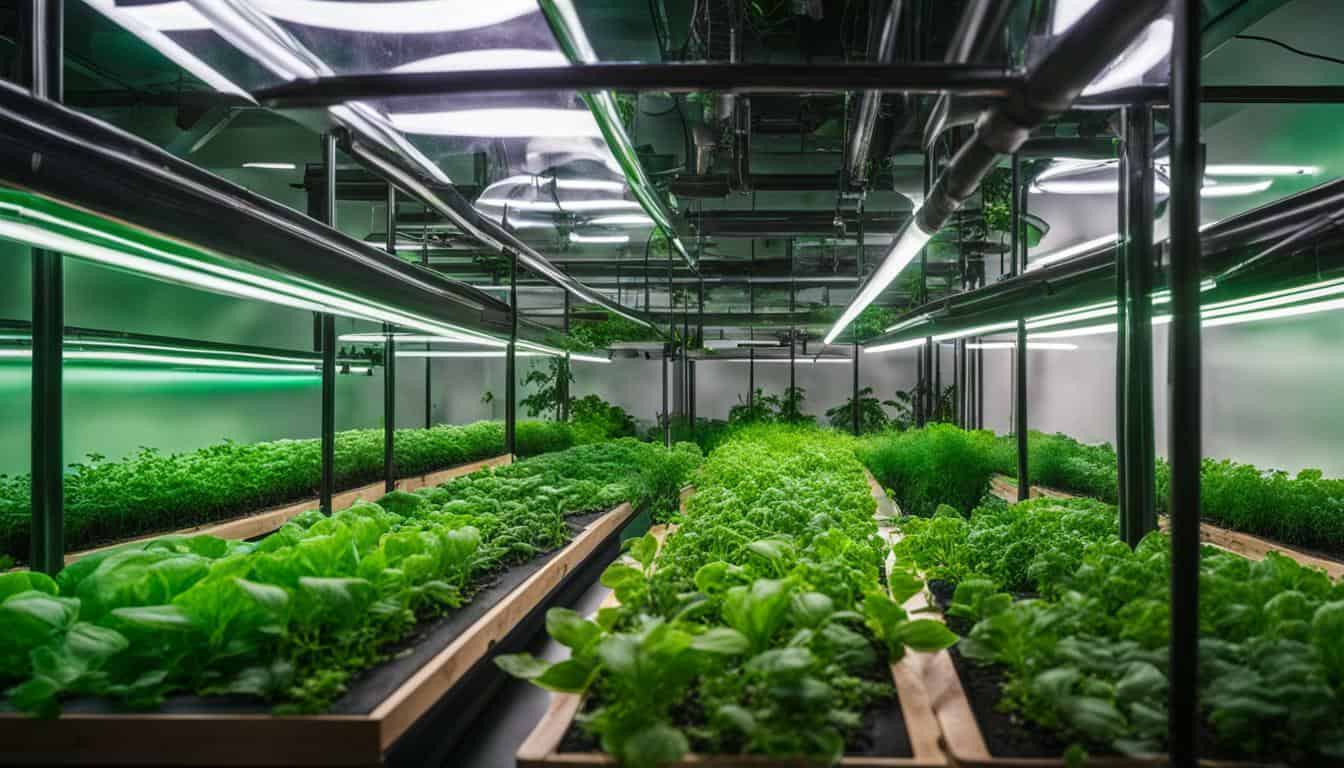



Leave a Reply